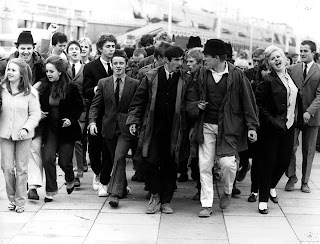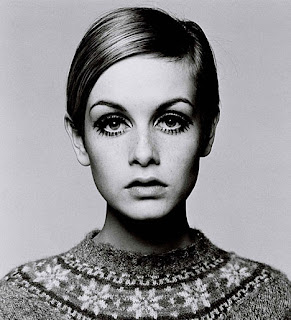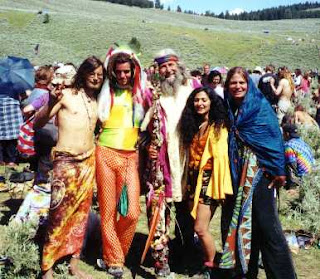2000
The fashion trend that dominated 2000-2009 is “Boho-chic”. Boho-chic is a combination of nontraditional, eclectic styles influenced by gypsies, hippies, and artistic clothing of the 1960s and 1970s. The style is one of balance between messy and feminine, while establishing a sense of uniqueness and individuality. The style itself is versatile, as the trend ranges from artsy to exquisite. Boho-chic is derived from the traditional gypsy or bohemian styles of India and Pakistan. Some of the original designs of gypsy clothing are tunics, peasent tops, sarongs, caftans, salwar suits, and kurtas. Additional elements are handmade fringe, patchwork, beading, and tiny mirrors. Many of these traditional elements are seen in the bohemian styles of today.
Some key elements of the modern boho-chic are loose and flowing garments with a mix of colors and prints, often with layers. Fabrics used are natural, and at times, organic cotton, silk, and linen, while the colors are muted and earthy. Other defining elements of boho-chic are: short and long flowing skirts, especially in white; furry gilets (a sleeveless jacket or vest); embroidered and flowing tunics; cropped jackets; large faux-coin belts; sheepskin boots (mainly UGGS); cowboy boots with intricate stitching; baggy cardigans; scarves with paisley prints; uneven hems, and tights or leggings. Some noted designers of boho-chic are Stella McCartney and Zarmina.
Boho-chic was first donned by actress Sienna Miller and model Kate Moss at the Glastonbury Festival in the U.K., in 2004. At the same time, the American version of the modern bohemian was popularized by the Olson Twins (Mary Kate and Ashley), and became fashionable in areas of New York City, specifically Greenwich Village and Soho. The trend caught on quickly, in the post-9/11 era, because of its emphasis on creating a personalized, eclectic look. Boho-chic influenced the resurgence of vintage shops, especially in New York City, as many celebrities have been seen scouring the racks for individualized jewels.














